

The mill of Firgas or Count's is a mill of gofio, Canary Island traditional food from the indigenous era, that works thanks to the force of the water.It is the oldest of the Canary Islands still in use: its construction dates from the year 1517 and is still grinding gofio. It is located in the center of the village, next to a park and on the irrigation channel of the "Heredad de aguas de Arucas and Firgas".



In the 16th century, Firgas was a small settlement that grew under the protection of a sugar mill. The incipient population needed a mill for flour, more exactly: gofio (the staple in the peasant diet in the Canary Islands). Therefore, the County of Vega Grande promoted the construction of this hydraulic mill site. To move its wheels, it used the Inheritance of Arucas and Firgas water.


For centuries, generations of millers have been exploiting this hydraulic work. However, in the 90's of the 20th century, the whole building (the mill, the miller house) was in ruins: between 1959 and 1994, remained closed and abandoned. The Town Hall of the Villa of Firgas acquired it that year. A comission restored it and now, five centuries after its construction, works perfectly. The Miller's House serves as headquarters to the Tourist Office; the mill still active, welcomes visitors who want to know the process of gofio.


Unfortunately at the time of the visit the mill was closed, so, I'll have to come back to visit the interesting heart of the mill. After this bit of the promises of the day we are already enjoying the Nature. Our guide Juan Manuel, connoisseur of this and other lands, gave us a continuous class of geology, zoology, and botany, leaving us on more than one occasion with open mouth and eyes , as he was discovering the secrets of the barranco de Azuaje.


On this day, we go to the heart of what was called Doramas forest, according to the Chronicles, a wooded extension covering North-Northwest of the island of Gran Canaria, a laurel forest, which was wiped out, by energetic support of the advancement of our islands. The wood of the trees was used as fuel for sugar mills, as raw material for the repair of ships first and then fuel to cross the Atlantic, and of course, the cause of this disappearance was due to that was the place of settlement of the population, owning the largest resources of water and the best land for cultivation which even today are the most fertile in the island.


To get to the beginning of the path, it brought us a guagua (bus) to the same edge of the ravine, from where leaves a road that passes by several abandoned houses and in ruins, to slowly move deep into the crack of the ravine.

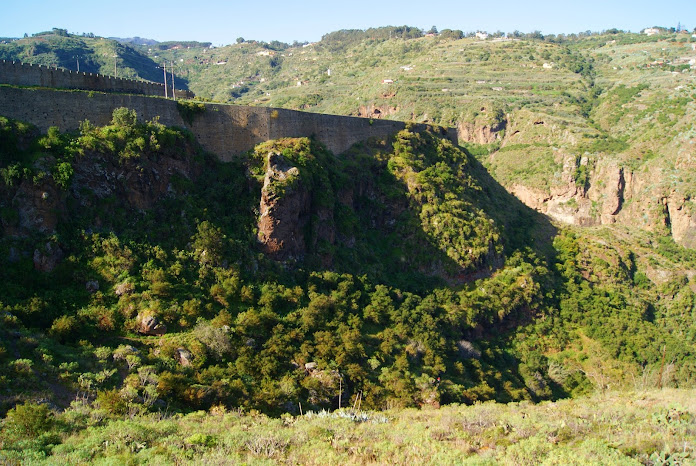
Once arrived at the wetland, we started to see the first signs of the typical flora, like the cruet, the sage, the guaydil, several species of tajinastes, cardones, bitter tabaiba, bejeque, some zones dotted with willow and Canary Island Palm trees, and countless other species that conform this rich natural space, jutting out between all the bicácaro a species of morning glory, considered by many botanists as the flower of the Canary Islands, for its beauty and because it is only here where it is found or the rejalgadera, a plant unique in the world: only found in the ravine of Azuaje.














Once at the bottom of the section that concerns us, we found the most pleasant surprise.On a bend of the road appears one of the pioneers of wellness and health tourism in the Canary Islands, the old health resort of Azuaje, which for years was the first to bring to the Islands nationals and foreigners that where looking in the renowned quality and power healing waters a way to restore their ailments in the most kindly climate of Europe. It dates of the year 1882 and was the coming of the Civil war and the economic cataclysm that brought with it, the cause of abandonment and oblivion. A real penalty, because the building well worth the reconstruction accorded by the Government of the Canary Islands, adopted in 2003 but that seems to not start never.








Here we make a stop to breathe the invigorating air of the ravine and prepare for a rise of the path that promises to be full of surprises and special places.Once we have left the area of the bath resort of Azuaje, undertake, without haste, the rise of the ravine. I have to stress, that thanks to the expertise and advice of Juan Manuel of Arawak, at any time we run risk, although it's an easy route and that it does not involve difficulty, but you need a guide as rain or wind conditions can alter the paths from one day to another.

So the way up, light at the beginning, but more precipitously as we climbed, shows us a multitude of pools and small waterfalls and springs that make the Barranco de Azuaje, deserve the name of river, as water flow is constant throughout the year.

As for the aquatic flora, totally different to that one found in the fall, we must highlight the recent discovery of more than thirty new species of freshwater algae in pools by which we are passing by, withe scarce data, but that is another example of the biological diversity of this special nature reserve.











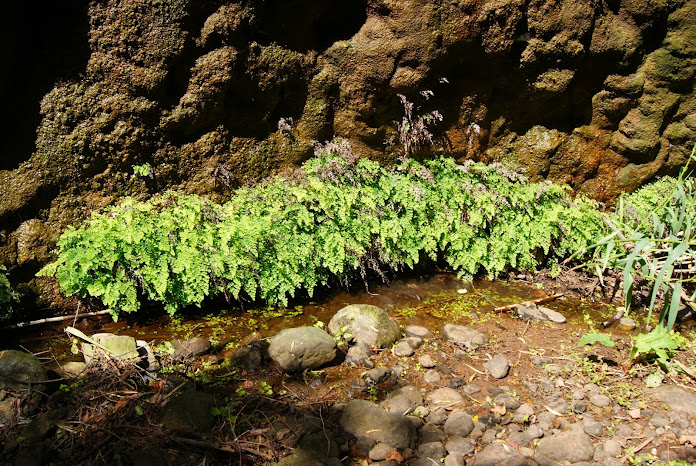


There is a couple of sections that may seem a little difficult but they are not, since the walls can be passed easily with the help of ropes placed for this purpose by walkers who have preceded our steps.Several signs of human presence break the charm almost untouched in this segment of the ravine, but fortunately they are not many, or are for the good of itself, as the planting of peralillos which made http://www.grancanariawalkingfestival.es/ to minimize the impact that had the participants passing through the area and that can be seen in one of the photos.



We continue climbing the ravine that changes its name and in the latter part we find the area of the Barranco de Guadalupe, ascending toward the houses of Matos and from here to the neighbourhood of the channels, where our path carried out on a concrete road that leads us back to the village of Firgas, where our guide takes us to satisfy our curiosity about the cultivation of watercress in ponds and an old laundry that still sees the water by the channel.








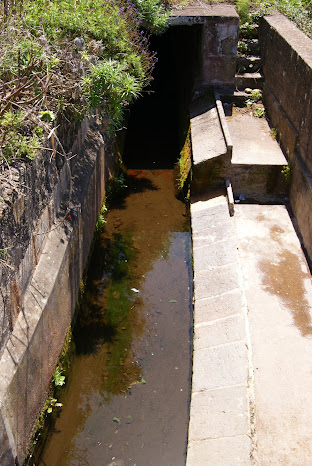
Although I am not a regular hiker, if I've done several routes of great interest, and I can say that all of them, the Barranco de Azuaje is one of the most varied, colorful and comfortable.No doubt a journey that will appeal to travellers of all ages, that will bring us closer to nature and that we will see up closer a corner of the island of Gran Canaria, which few people know about.
And from here we go to the Village of Teror, and there we went along its main street, the Real. More than a path, more than street, it seems an avenue flanked by balconies that have seen and been allowed to see the social life, commercial, political, religious and cultural municipality from 5 centuries ago.


The largest and oldest mansions are familiar to all people from Gran Canaria and foreigners coming to worship the Patron Virgin of the province as if it were the arms of the town itself that welcomes them. Because if anything characterises Teror is that for over 500 years it has managed to receive all those who have visited the municipality, as every year, when the road becomes the main stage of the Fiesta del Pino and its Bough Parade, as well as other important festivals of the town.



Apart from the festive character, the Real has a great commercial tradition, especially in its initial part and half where they keep some of the more ancient shops of the municipality.Its importance was such that for several centuries and until the middle of the 20th, many trendy items came directly to the shops in this street from Las Palmas without even before passing through the capital.The buildings that are now watching us, housed two hotels: "El Pino" and "English" the rest places of the most illustrious visitors who wanted to make night or enjoy a longer stay in the Villa Mariana.






These same buildings, are an architectural museum in the open air, although they do not follow a temporal pattern, we can see, here and there, signs of absolutely all the periods of the canarian architecture, from the House of the Patronos, 17TH century, belonging to the family Manrique de Lara where is guarded the treasury of the Virgen del Pino, to the more modern family houses from the beginning of the street, belonging to the 20th century.The Real is, without doubt, majestic prelude to the Virgen del Pino, catalogue of architecture and commerce of the Villa de Teror, but especially those arms that seem to welcome us and keep us at the shelter and care of the Virgin.













And we arrive to the Church of the Virgin.

Because it was at the top of a pine tree, today disappeared, where in 1481 the Virgin who would later take its name appeared. At that time it was still half the conquest of the Islands, and the area belonged to a nearly unexplored region called the Selva de Doramas ( forest of King Doramas). Such was its luxuriance that found shelter in its shadow three large dragos and a spring that reportedly was carrying a very miraculous water.




Unfortunately a windstorm toppled the Holy Tree, although, as a treasure of great value, lies in the Virgin room the Green Cross, carved in the wood.So watching the crowds of pilgrims who came to drink the miraculous waters and visit the site of the apparition, they decided to first encircle the pine and then build a chapel to worship the Virgin. But quickly it became small and had to be build a building of great magnitude that was completed in the 17TH century.
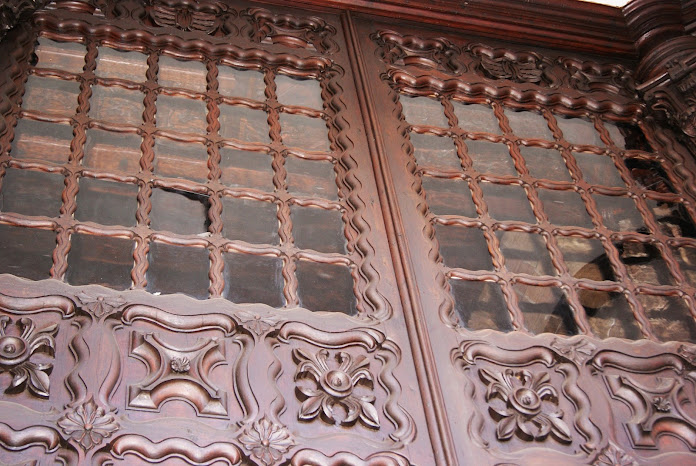


For me, as for many other admirers of Canary Island architecture, this temple is one of the clearest examples of the elegant style of the stonecutters of the Islands, especially for the perfect combination of the blue stone of the facade with yellow sides and the tower of sandstone and the curiosity of ten smiling gargoyles following the tastes of the time.




Already within innumerable jewels of Baroque religious sculpture other treasures stand before our eyes, starting with the beautiful Virgen del Pino, who presides over the basilica from his dressing room, or value carvings as the Christ of the Column of Luján Pérez; also look at the colorful stained-glass windows from the beginning of the 20th century.



Before you leave, look at a curiosity: to the right of the main door is the access to the stone yellow tower and at the time the organ watching from above the faith of the congregants. Only hinted the ladder of ascent through a small interior window.







The Virgin, which often was called to Las Palmas to alleviate drought and disease over the centuries, lies in one of the most beautiful temples of the Canary Islands, waiting that pilgrims come to worship Her and pay their respects to Her. Teror is a heart so Holy that even pinecones given by the Holy Pine where the Virgin Mary appeared, were set in gold and silver to rid of all evil to their carriers.There is no doubt that the basis and almost reason of living of the Villa is its religious and social entity that has been impregnated in its streets, houses, squares and monuments.
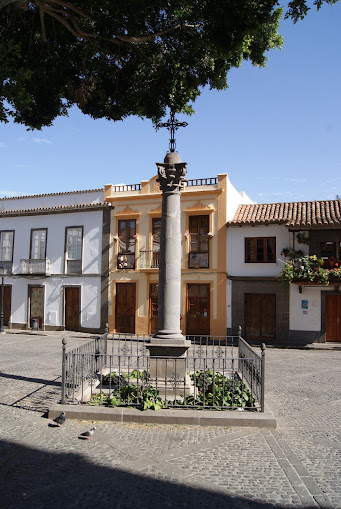


Its origins go back to the 15th century, although the oldest edifications that remain belong to 17TH and its time of splendor was mainly 18th century.The historic center is divided into the Barrio de Abajo, where are located the most important monuments, and the Barrio de Arriba, located on the mountain.
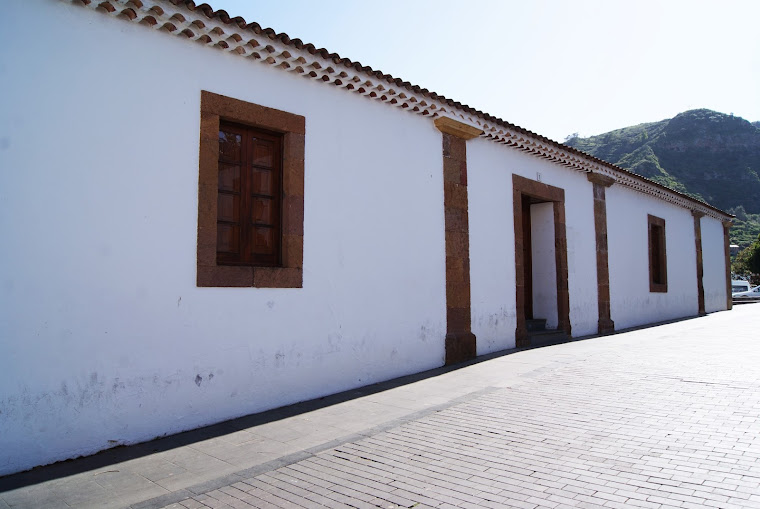
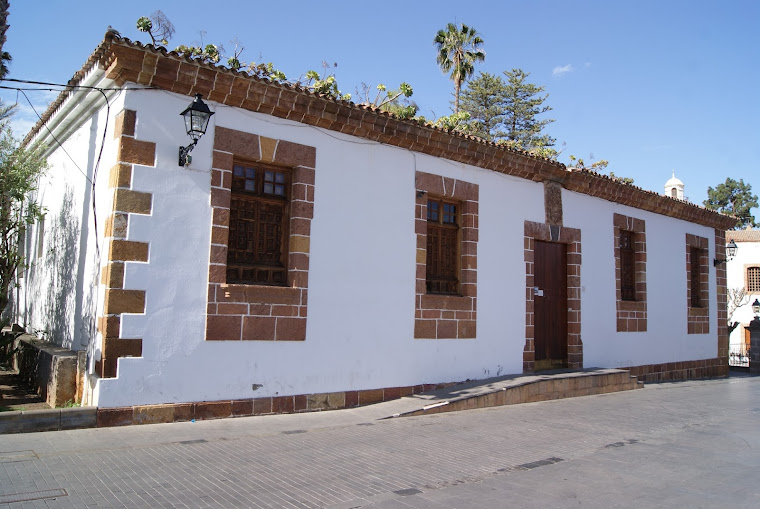

From the door of the Basilica, we go around this, while we are seeing signs of the careful architecture of the Villa.Like the Episcopal Palace, that was a gift from the town of Teror to bishops Morán y Delgado in thanks to the construction of the Temple of Our Lady of the Pine, taking advantage of surplus materials from the factory of the Basilica.



Since its restoration in 1982, a part of the building houses the Culture House with exhibition halls and Auditorium, and the oldest part is used by the parish for religious activities.Let's turn and see how the branches of the trees of the square have been intertwined to form an arch. I would love to be in the summer, when can be seen in full splendor the green dome...







But we have to continue, and our steps lead us to the Plaza Teresa de Bolívar, which is one of the artistic signs that Santiago Santana and versatile Néstor Álamo left in Teror. This small but cozy square was configured in 1958 as a relief to the Plaza del Pino, before the large influx of pilgrims and visitors, mainly on the dates of the festivities. Its name comes from the wife of Simón Bolívar, great-granddaughter of Bernardo Rodríguez del Toro, illustrious character born in Teror in the 17th century.


On the square, two fountains, one attached to the wall with a pine carved in stone on which is placed the coat of arms of the Rodríguez del Toro family and another in the form of pillar of great artistic value built in yellow stone of Teror.Its two banks of stone invite to enjoy the environment and the sun which at that time was invading space.



But time passed very quickly, as each time one delights with the new discoveries, so we continue surprised by the neat houses and streets, full of flowers and colors that catch our attention.We went through corners rehabilitated as the Stairway of the Cross of the Fallen and the Town Hall, to return to our starting point, the Plaza del Pino, witness of hundreds of celebrations, some religious and other pagan. Little by little, we are going away, knowing that it must be, that there is still much to discover in the Villa de Teror.









And it was time to know the place where we had to spend the night. More than a rural hotel, a home in the countryside.Because we feel so, just crossing the beautiful gate of the entrance of Las Calas. Feel like home.



And it is the intention of the owner, Magüi Carratalá, that we have that feeling of comfort, well-being, feel care and clothed in a hotel that has become our second home for a few days.Not only for taking care of every little detail in decoration, for having exquisite taste (simple, not overloaded, but stylish and cozy), but also in the close attention but with courtesy as befits an authenticaly educated Lady.
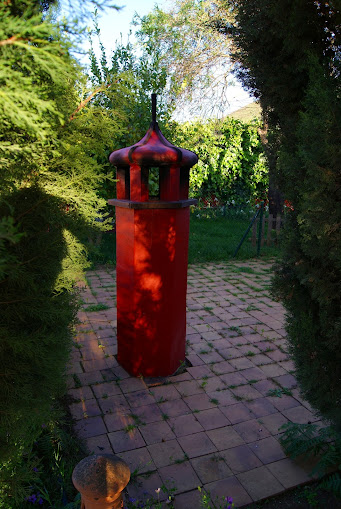


HoursI would spend chatting with Magui about travel, hiking, books or thousands and one things in the cosy and bright room, covered by warm blankets for the fresco of the nights of the Vega de San Mateo. It forms part of her way of being, her kindness and her ability to make you feel comfortable and welcome guests.And that is transmited to the hotel, as if it were an indivisible part is itself, as if Magui blood flowing through each of the rooms of the building, gives it life and makes it beat.






Warmth in the colors she has chosen to give a new life to a Manor House that was lost in history, Arab touches on the louvres of the rooms, memories of dozens of homes and hearths in the wonderful collection of porcelain and glass which allows us to enjoy in the small but cosy dining room, where all the guests share table, to exchange experiences and sensations. Space in which the senses delight in wonderful cuisine, succulent and tasty, homemade and simple, flavors that with so much sweetness prepares the small but highly efficient team of the hotel.





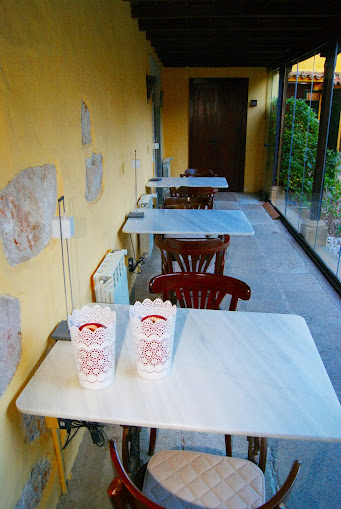



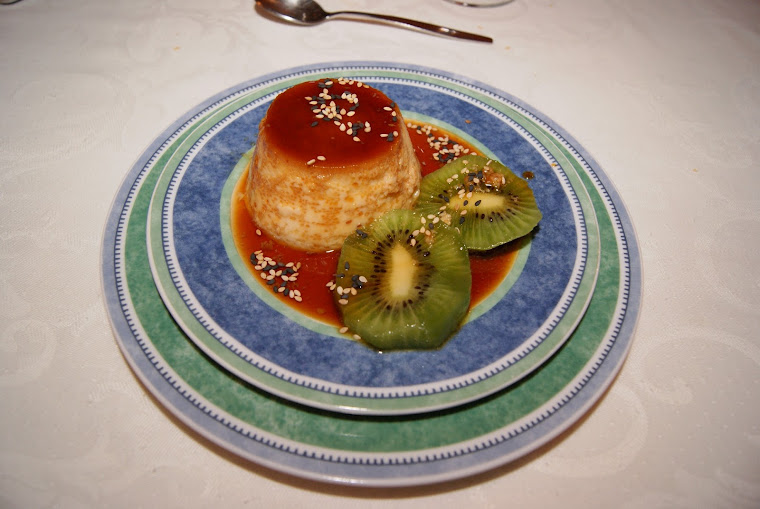
The rooms are even more welcoming. Fluffy beds that invite you to take advantage of the silence and the serenity of the hotel and its surroundings, adorned by precious pieces of ceramics and exposed stone walls, with moorish details such as a table made with a carved tray.


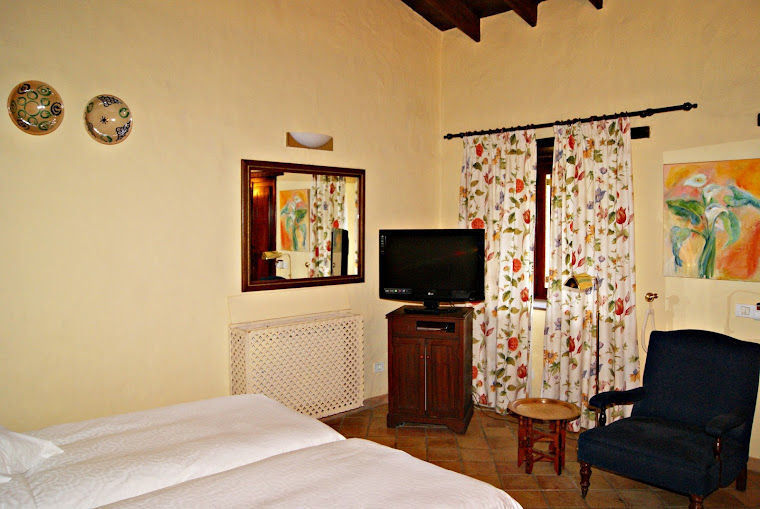

The bathroom, flawless and intimate, combines the modern touches with classic essence, which is the soul of the House.




Beautiful garden with snow-white callas (the plant that gives its name to the hotel), delicate way orchids, tulips and a mandarin tree of fragrant and juicy fruits bouncing its aroma in the evening.


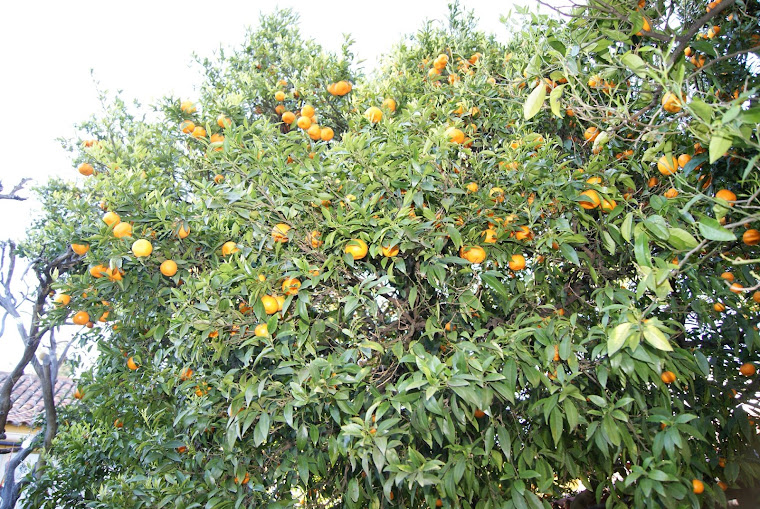





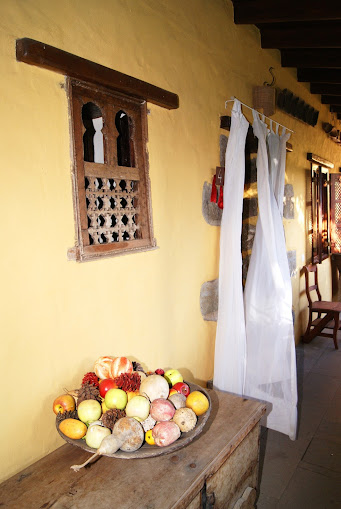

The covered corridor in which the most delicious breakfast are served where you can enjoy the light and heat of the morning, and above all the tasty bread of San Mateo dipped in rich butter and jam, a few small doughnuts full of flavor or the delicious juice of orange's own harvest, deserves special mention.The Gallery on the upper floor is a world apart. It is here where you want to go in the sunsets, enjoying a book, a good conversation or simply watching the light through crystals and lace curtains, imagining the past of the House, when its owners lived in summer... did they feel the same?





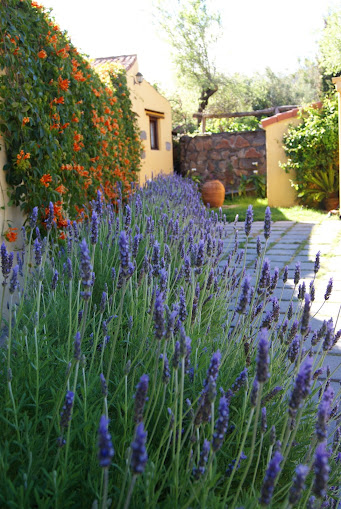


What I am sure they did not feel was the pleasure of bathing in the lovely swimming pool which occupies part of the garden and then sitting in the gazebo and see the afternoon pass in the heat of the summer sun.



A glass-enclosed space that usually serves as a game room can well become a great place for an intimate wedding with the advantage of enjoying the garden and stay in the hotel.


Watching the photos, and recalling the pleasant moments spent in Las Calas, I just think about the next time that we will enjoy another stay in the hotel and the sympathy and kindness of his soul, Magui.



We left Las Calas, and after a short car ride, we arrived at the San Mateo market.

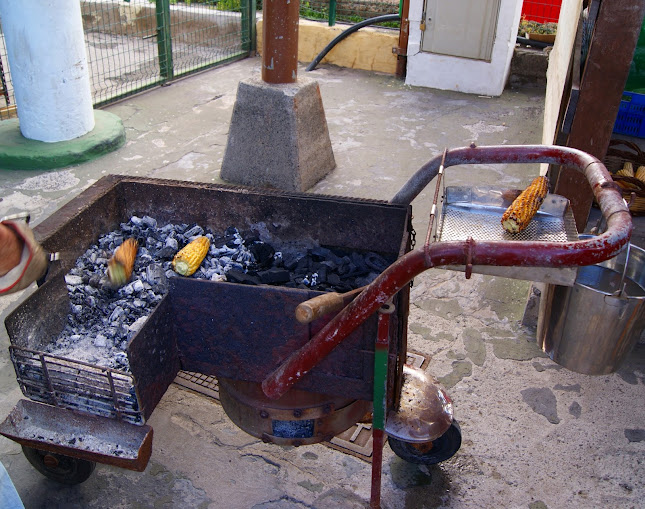
You can hardly found no longer markets like this. They are the markets that I call "of the senses", where once you get in, you start enjoying the aroma of flowers and plants, the colors of fruits and vegetables, from the conversations of the people, from touching this and that other, savor a piece of tasty cheese and a glass of good wine to accompany.



The rich Vega de San Mateo is in itself an orchard. The mild climate, humid but sunny, the abundance of water, the rich soil, red and dark, and of course the know-how of farmers and graziers, nourishes this market that appeals even to organized tours from the tourist spots of the island.

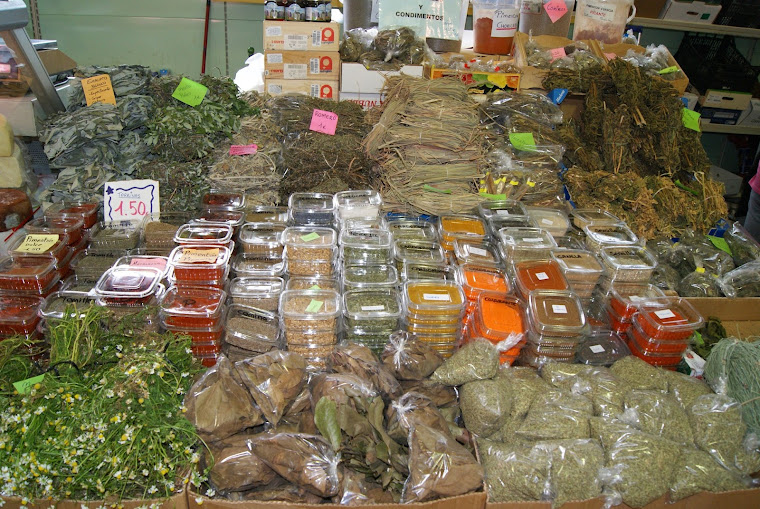

Such is the fame that the people tripled the number of inhabitants on market days and around the displays is an enormous amount of side businesses that without offering those products of the countryside, complement the demand, such as crafts baskets, footwear, wood work...

I recommend to spend an hour devoted to enjoy the super market, and buy much and everything, since prices have no competition and comes all into our hands.To complete, a short walk through the village, very quiet, clean and care. Enjoy a coffee or a meal at one of the restaurants also is good choice, and above all enjoy the rural climate of San Mateo, one of the best of the Canary Islands.





On the way, before arriving at our next destination, we had the possibility of making a quick visit to the Parador of Cruz de Tejeda. A few works of art have accompanied my life with so much strength as emanated from the brushes of Néstor Fernández de la Torre. The "poem of the Atlantic" made me dream from my childhood with the beings that inhabit it, big fishes, floating figures, the warm colors and bewitched ambiances...In my visit to Gran Canaria I ran head-on with his architectural work, and also captivated me. Although of the former parador designed together with his brother Miguel, little now remains, it maintains its essence, that one of the "neocanario" style that wanted and could reflect on their buildings, such as the wonderful Canary Town, and details that adorn some corners of the establishment, as the large living room lamps and many other treasures.




The funny thing is that being an artist with little affection to the regime, the Parador de Cruz de Tejeda was built in 1937 as a hostel, and opened by one of the men of the Generalisimo Franco, Carrero Blanco, something which would have done little grace to the artist, especially knowing the persecution that were suffering gays at that time.Anyway, the genius of the building surpasses any political obstacle or moral prejudice and it has not been modified substantially, at least outside, since then. As we realized since we arrived at the entrance of the hostel it takes its name from the huge stone cross that marks the center of the island.
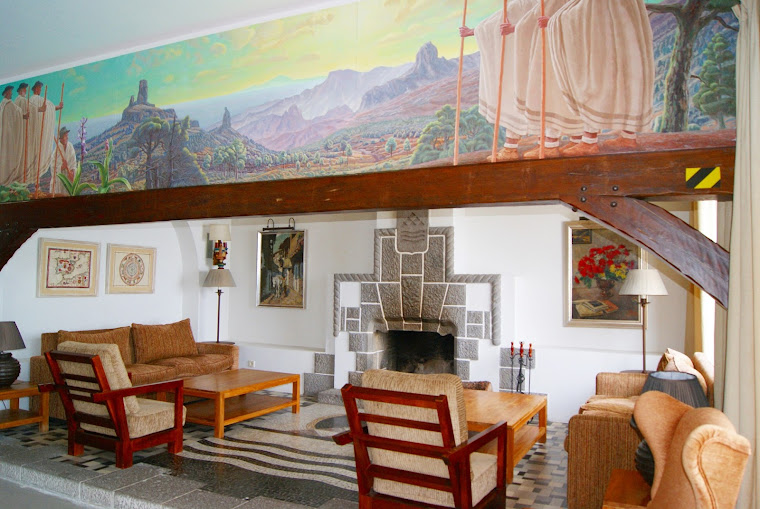



On the outside, it does not differ much from any old house of the thousands who were scattered by any of the Canary Islands, while the interior is a small palace that summarizes the genius of the brothers.


Although, I repeat, little remains of what was conceived in the mind of Fernández de la Torre, even the frescoes that adorn the living room are original. The various renovations have changed almost completely the appearance of the place.Without a doubt, I 'd take a really beautiful and original corner, the SPA.In its 275 m2, it includes a wonderful indoor/outdoor heated swimming pool, delightfully decorated exterior that allows, on clear days, enjoy nature and the enviable views of Roque Nublo and his brother, the Teide.





Multiple treatments can be enjoyed on site, from wrappings in Aloe Vera, the use of the hot and cold energy of volcanic stones, to the fabulous Aromasoul, with essential oils, relaxing and stimulating.A unique place, where still lives the immortal spirit of Nestor...And so we went to another area of the island, where grow the almond trees and good honey is collected, but with a peculiarity in lodgings...




The young and charming manager of Artenatur, Miriam Rodriguez, introduced us to the fascinating world of the cave houses of Artenara, municipality that contains much of the extremely important reserve of the biosphere of the island of Gran Canaria.


I did not know this company comprising not only houses named "caves", but also several producers of wines (red and liquor), honey (thousand flowers and other fruits of a nature that was decided to be very generous with this land of Gran Canaria summit.So, invited by Gran Canaria Natural (http://www.grancanariafincas.com/), we discovered the original proposals that Miriam kindly showed us.First we visited the small "House Mamá Nieves", that seemed taken from a fairytale. Details that reminded homes of our grandparents, like piano, crochet bedspread, the chácaras hanging on the wall, bumpers and the cabinets of the kitchen...An endearing ensemble that inevitably make feel visitors or guests feel like home, with unforgettable views of the Nublo and the Bentayga.








As I said many times, there are small corners, that remain unnoticed when we visited a place.This is the case of this viewpoint which is located in a bend of the town of Artenara. Its origin is very simple, but at the same time very literary, since it features the illustrious writer and intellectual Miguel de Unamuno.
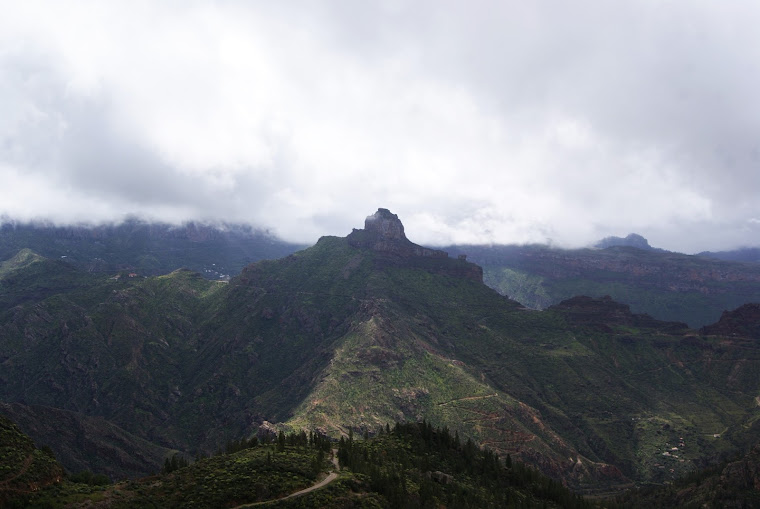

When he visited Gran Canaria, around 1910, he was absolutely amazed by the landscape that had before their eyes, to describe it as a 'petrified storm", such was geologic violence that is the vision of the Nublo and Roque Bentayga emerging between ravines and mountaintops.

He could not less than praise this Gran Canaria corner in his work "By lands of Portugal and Spain". And it is that the place is impressive, and you could say that Unamuno himself was not of stone, but metal,when you see the life-size sculpture that was dedicated to him in 1999, as well as the route de Unamuno, which runs precious corners of the municipalities of Teror, Moya, Valleseco, Tejeda and Artenara.A landscape of 14 million years has hardly changed since the eyes of don Miguel saw it.
Then we went to what was the family house of Miriam herself, "El Caidero", first prize of Rural Tourism and had a very special charm.Starting at the entrance, typical Canarian and located opposite a rock that was painted to be modeled on the Aboriginal spiral and striking from a distance, which is complemented by a winery in a cave adjacent which matures the tasty grape of Artenara until it turns into delicious wine that has even called attention to the always curious Chinese. Miriam, good luck in this adventure!





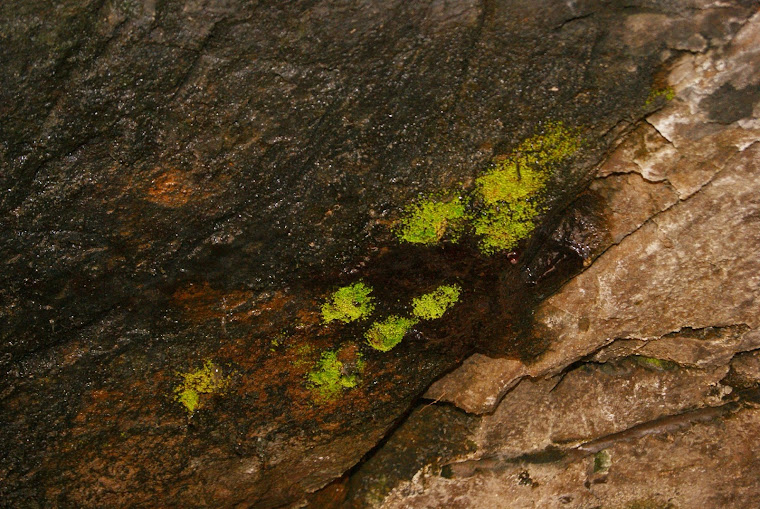


Let's go into the house to see the location of each piece, the large and old beds, ornate heads, huge corner sofa and details such as an old scale or the super kitchen chimney.On the huge terrace a swimming pool that invites you to cool off in the days of heat of the summit, when the hot weather is unbearable and is relieved only in the water or inside of the cave houses, where the temperature is kept constant throughout the year.






Thanks to Artenatur I could discover a new world in terms of accommodation and hospitality in Gran Canaria, unknown up to then but that everybody certainly should try.
But before leaving Artenara we had a pending visit.There are thousands, perhaps millions of churches, chapels and altars that praise and give shelter to so many images of the Virgin Mary around the world, but how many are there who really captivate for the simplicity, innocence and the fervor of those who raised them? The Hermitage of the Virgen de la Cuevita, Artenara, quickly calls our attention. First, because having no prior knowledge of the special enclave,when we were told that we were going to visit the Virgin of cyclists and folklore, we looked all around but we could not find the Hermitage.

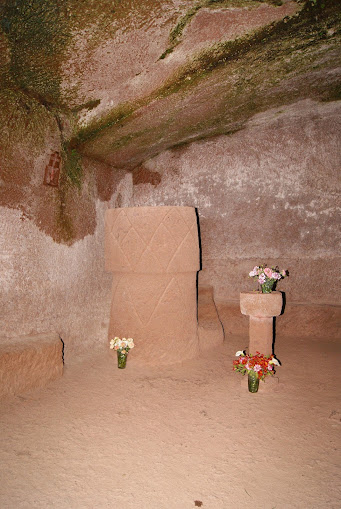
Until we stumbled upon it on the same wall of the mountain. The tradition tells that several Franciscan friars of the expedition of mallorcans and catalans, penetrated by the abrupt ravines of the Western side of Gran Canaria in apostolic mission, reaching the summits with a small image of the Virgin Mary which, with the help of some indigenous catechized, carved, face of the cliffs, a small house of prayer where they placed the Lady. Just housed 11 people. Later, the great devotion that generated the image forced its expansion and improvement, until it is as we see it today.By passing the small door, which however lets pass a great jet of light, we contemplate the surprising interior, which has carved in rock a choir, an altar, pulpit and confessional.



We come to see the stone furniture, like not wanting to believe that something so simple can be so beautiful. The contrast of the colors of the images and raw rock is very large, and causes that we immediately focus view on the small figure of the Virgin, just 80 cm high and the crucifix that accompanies it in the Hermitage.On one side, before leaving, we see a framed the dedicatory of two important Spanish cyclists who also pay devotion to their Patron Saint, Miguel Indurain and Perico Delgado.



A beautiful corner that we must visit when we are in Artenara.
And before leaving the company of Miriam, a quick visit. Like in most of the towns of Canary Islands, the first religious buildings rose quickly and without desire to endure. Hurry made many of the early churches, apart from being quickly smaller by the speed with which came the Christianization and the colonization of the Canary Islands, awkwardly raised and with poor quality materials.
This made that almost all of them had to be build up again several times, like the Church of San Matias in Artenara. The current church dates from 19th century, which include two towers built of red stone of Tamadaba and with a beautiful mural painting, the work of the artist from Telde, José Arencibia Gil, that occupies all the front, behind the altar and which has a curious history.




Apparently, the artist chose the models for the picture among the inhabitants of the village, so, one of them is for example the father of our friend Miriam of Artenatur, who become a blonde angel.If you look toward the ceiling, you will discover a beautiful example of wooden coffered ceilings, of clear mudejar influence of the beautiful Canary Islands tea wood.



In the temple is kept the litter of silver and the treasure of the Virgin of the Hermitage, that adorn it each year in its Patron Saint Festivity, as well as other images that are used for processions in Holy Week. Our destination was a treasure of secrets...La Fonda de la Tea.
This inn of the 19th century is located in the old town of Tejeda, opposite the Church of Socorro, with excellent views of the basin of Tejeda, Roque Nublo and Bentayga.



When we approach the entrance we thought that the hotel is not very large, just a couple of floors; but here's the first surprise, since we raise up the head and we see that like a creeper there are going up floors and quickly imagine the view that you should enjoy from above and that makes us rush to enter.Second surprise: the exquisite decoration of the reception and Hall entrance with parts recovered from the same House and reused intelligently and with great taste, like for example a door now converted into a beautiful table.



Third surprise: the owner, Fina Suarez, apart from being the restorer, curator and soul of everything that surrounded us, is also a person of an exquisite taste, connoisseur of thousand stories (not in vain is a graduate in Geography and History and Official Chronicler of Tejeda) we could listen to her sitting in the wonderful Hall until the sun rises. And she accompanies us in the tour of a property that only holds pleasant corners, full of ideas that seem straight out of the imagination of the best designers of interiors today; bright and spacious public areas that combine furniture, beams and ceilings of the past with the most modern comforts which did not expect to find here, like a meeting room full of light, with touch screen, and all the advances tath may need any incentive to business or private, or the magnificent rooms overlooking the basin of Tejeda, air-conditioned and with the essential Internet access, decorated with the same exquisite taste and the warm and relaxing colours showing the rest of the hotel.



A penultimate surprise, since the last will never be revealed, in the common areas and rooms are a few small treasures that inevitably attracted my curiosity. Precious oil paintings on wood of tea, also fruit of the work of the ingenious recycling thin, and masterfully painted by Juan José Domínguez and reflecting landscapes of the island of Gran Canaria and with a painting still lifes full of brightness and color, helping to give a unique touch to the decoration of all the rooms.


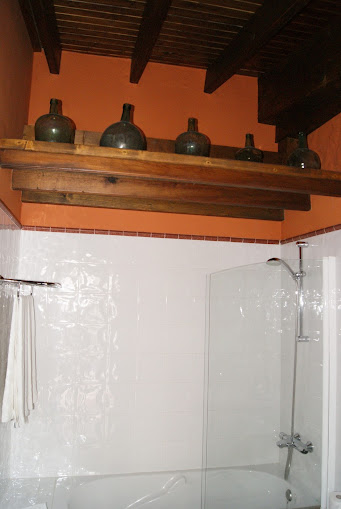

Refurbished playgrounds, a terrace with a unique view, antique furniture, the tranquillity of the place, the comfort of the rooms and especially the sympathy and infinite knowledge of Fina Suarez added to the charm of Tejeda, make a unique place in all Canary Islands. The Fonda de la Tea building fixed and preserved with care and love, where the guest feels like home.. what more you can request? Oh, yes! The last secret...But that one can be only known whwn sleeping in the Fonda de la Tea...A walk takes us to see the small but very complete Museum of the Traditions of Tejeda.


The Museum of the traditions of Tejeda is situated in one of the most emblematic buildings of the town.Renovated in beautiful stone, it retains the structural and decorative elements of a traditional Canarian House. The result is an ideal place, chosen by the tejedenses to showcase its history and way of life.Starting from the entrance, where it awaits a very curious and wonderful recreation of an 'oil and vinegar', so called small "sales" where the oil is shipped in a site and store vinegar in the cantina, where men drank.
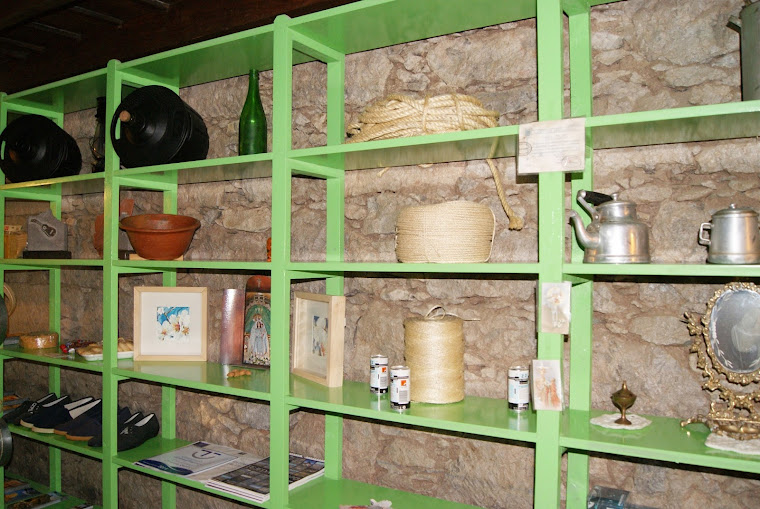


But it also offered other items, from food, textiles, school material and cauldrons, to cleaning products, drinks, and hardware.In the isolated hamlets, this type of establishment was essential, because although through the canarian history our rural economy was based virtually on self-sufficiency and the exchange of goods, obviously there were things that where needed to buy, and those stores were the only ones that could offer them.







But the museum goes on, and through the different sections we can learn more about the prehistory, the Conquest and the traditional occupations in the field, with special emphasis on the exceptional quality of the agricultural products of the area such as honey or wine.Scenes of life reflected in large explanatory murals, furniture, dioramas and a wonderfully restored and preserved house, made visits to this small but very complete Museum become an experience to repeat. I should congratulate the initiative and foresee many and very good years for the dissemination of the history of Tejeda, a really interesting and educational history.


Tejeda is paradise for any country and nature lover, hiker and trekker of summits and ravines, for those who like good food and good wine and who enjoy the good pastries, rich almonds and sweet thousand flowers honey or exquisite plum jam.


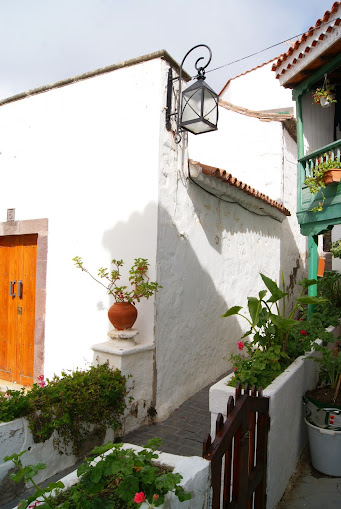


Tejeda is tradition, guardian of the oldest roots of Gran Canaria, of its most emblematic and beloved, customs, origin of many flavors and memories that even crossed the Ocean and went to America.

A stroll in Tejeda shows us a place where it seems that ime has stopped, that it did not want the people to stop of being the way it is and that its beauty make it lost its life.But you know that either it must die, and why will hop on the bandwagon of progress adds to its daily live everything what is necessary for running with the times and so knows of internets and marketings, sustainable tourism and catering, alternative medicine and astronomy...Tejeda knows all that and more. A weekend is not enough to enjoy all it has to offer, even a week... to the best or even of a lifetime.


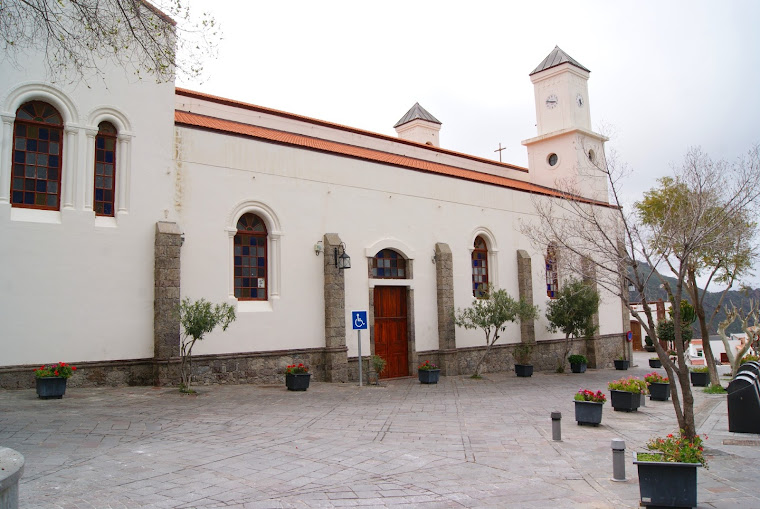

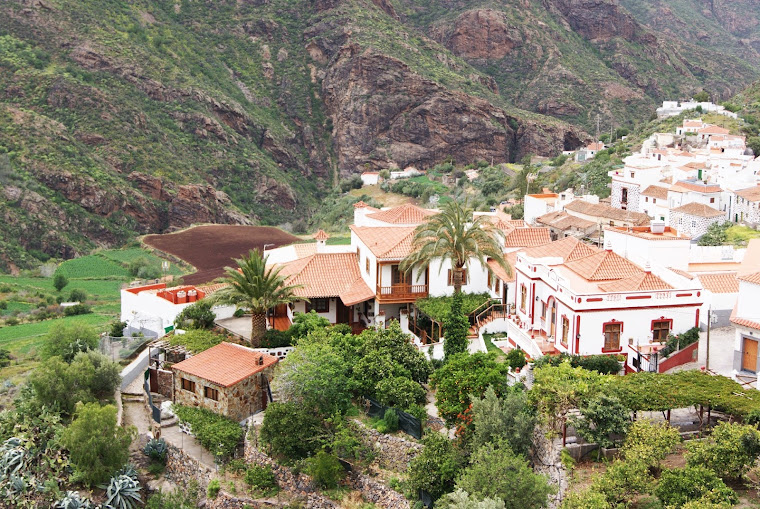

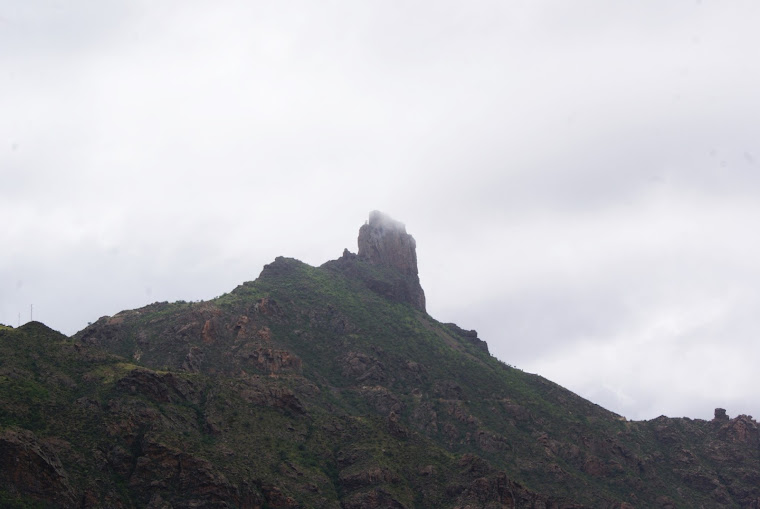
Thanks. It is the first thing I want to express to the owners of this magnificent restaurant of Tejeda for his warm and friendly welcome, the same which we enjoy in the rest of our visit to Gran Canaria.



But the difference is that here we could enjoy it with all our senses and at a same time.First, just enter the restaurant, and even before, as the aroma of fragrant dishes filled all the local and part of the street, as if it were a hand that takes us and invites us to enter.Once inside, the simple décor but at the same time cozy, as it should be in a restaurant, with nothing to distract us from what we have come to do, enjoy the food.Received by the owner, and served by it, we do honor to his kindness leting him to be himself who chooses what we where going to taste.


Starting with a delicious oil with sea salt and balsamic vinegar (for dipping the crunchy and flavorful bread), some great canarian style boiled potatoes with sauce, and continue with some piquillo peppers stuffed and breaded very tasty, a unique cheese in the country, a tasty scrambled eggs with prawns and mushrooms, famous 'ropa vieja', tender and juicy, and ending almost without being able to give one bit more with the delicious ribs with barbecue sauce.







And to top it off shortly, a dessert of championship,a creme caramel with ice cream and cream, topped with the Bienmesame made with almonds of the area. A pleasure for the senses.

Undoubtedly the Cueva de la Tea, with its extensive menu get satisfy the choice of any who visits it, with dishes full of flavor, very well presented and inviting you to enjoy them, with the addition of a care and friendly service, fast, something hard to find today. And remember that it is in Tejeda...By the way... did you know that a bitter almond from Tejeda a day can control diabetes? Pure magic...And with such good taste, we finish a journey full of nature, of new experiences, wonderful people, great food, beautiful and cozy places... but above all a unique opportunity to meet and share first-hand a fraction of all that Gran Canaria has to offer to the world.Hermes gives thanks with all my heart to those who have made possible this experience and promises that he will return soon.Hermes loves Gran Canaria...
No hay comentarios:
Publicar un comentario